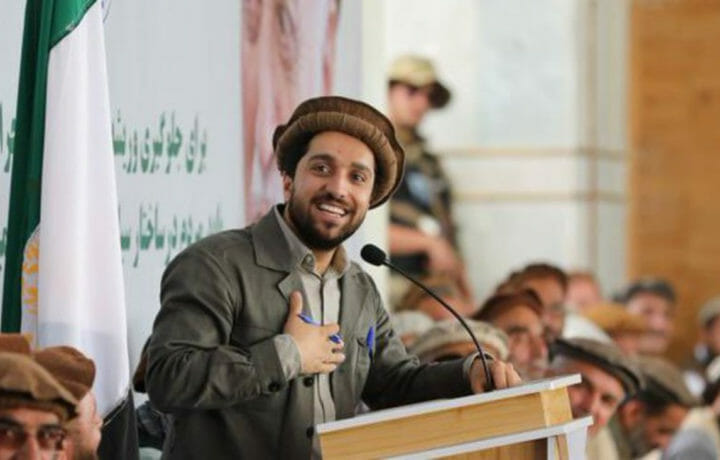The Taliban-Haqqani regime continue to hold the levers of power in Kabul, but are struggling to govern and provide even minimal services to the Afghan people. The dissatisfaction of the Afghans with their current regime is increasing, yet no opposition party seems to be capturing the people’s full attention. This week I sat down with Ali Nazary, the head of foreign relations of the National Resistance Front (NRF) of Afghanistan to find out more about the movement.
How the NRF Functions
The NRF operates in the decentralized manner that they advocate for Afghanistan’s government. The founder, leader, and commander in chief is the son of the late Ahmad Shah Massoud. NRF leader Ahmad Massoud is one of the famed military commanders six children and there is certainly a bit of a cult of personality around Ahmad, as there was for his father. Since its founding in 2018 as a grassroots movement it has created various political and security committees to help with decision making.
The military arm of the NRF is mostly made up of former ANDSF members from the Special Forces and Commando units. It considers itself a professional military force and not a militia. In their eyes they are the only military unit still fighting terrorism in Afghanistan. Their CINC is Ahmad Massoud, who as a part of the political arm of the NRF resides outside of Afghanistan.
What NRF is and is Not
Nazary was adamant that the NRF is not a coalition of political parties and Afghan elites. The NRF is a political military organization and not a sectarian political party. They do not want to be associated with what they called the failed and corrupt former leaders in the country. The NRF are proud that they began as a listening campaign by Massoud in the villages of Afghanistan. They believe they are a movement for all Afghans regardless of ancestry and provincial homes.
They see themselves as a movement seeking a future Afghanistan that the majority of the people want. That is an Afghanistan with a more decentralized democratic system that empowers provincial and local level leaders. As they described it, they want more of a federal system like the Swiss or the Americans have. They do not believe that a 14th century emirate is the right fit for Afghans and reject radical Islamism.
While the NRF is calling for full human rights for all Afghans, many of their critics have been pointing out that the NRF is represented by a flag that is not the inclusive national flag of Afghanistan. When I raised this critique, Nazary noted that this is something the NRF is studying, and that the official policy of the NRF is that any member may use both flags at events. The NRF sees their lack of restrictions about the various flags favored by anti-Taliban groups in the country, as giving Afghans more freedom. They do admit this issue has become a distraction from their goal of creating a movement that attracts all Afghans.
What the NRF wants
Nazary explained that the NRF wants a united Afghan nation at peace with its neighbors, but not at the cost of human rights, sovereignty, and democracy. They are willing to take up arms to defend those principles, but do not seek a partitioned Afghanistan either. They feel they have been invaded by terrorists and Pakistan and need to unite Afghans in repelling that invasion, and partnering with other nations against terrorism and terrorism supporters. In the end, the NRF seeks an Afghanistan government that isn’t Islamist or overly-centralized and corrupt. They want to end the zero-sum game that has been the Afghan political way for decades.
How the NRF Can Survive
A few obstacles face the NRF if they plan to become the largest opposition party to the Taliban-Haqqani forces. First, there is the lack of unity among Afghans as they react to the shocks of losing the Republic, and coping with humanitarian disasters. This lack of unity is one of the key flaws that allowed the Taliban-Haqqani invasion. Second is the current Taliban-Haqqani violence against former ANDSF and Republic government members and supporters. It will be a challenge to combat the Taliban model of ruling by fear and terror. Finally, there is the proven capability of Pakistani lobbying in nations around the globe. Pakistan now feels secure they have installed a pliant proxy that can win international recognition as a legitimate government. That is a decades-long desire of Pakistan and will be hard to compete with. While the NRF is finding support from the Republican party in the United States, they are up against Qatar, China, and Russia as they support the Pakistani control of Afghans. They also struggle to get the Biden Administration and most in the Democratic party to see them as a viable Afghan partner.
The NRF does not see themselves as a completed organization. They are an evolving movement that can see itself leading either a government in exile or an opposition government inside Afghanistan once they have secured enough territory. They feel their military arm of professional soldiers would easily create a ready to launch professional national military again. As one of my favorite generals often said, “there is no need to rush to failure, I know how to get there.” That seems to speak to the place the NRF is in today. They are listening to Afghans, talking to other nations, planning and building a coalition. Time will tell where this road leads, but the wheels are in motion.




